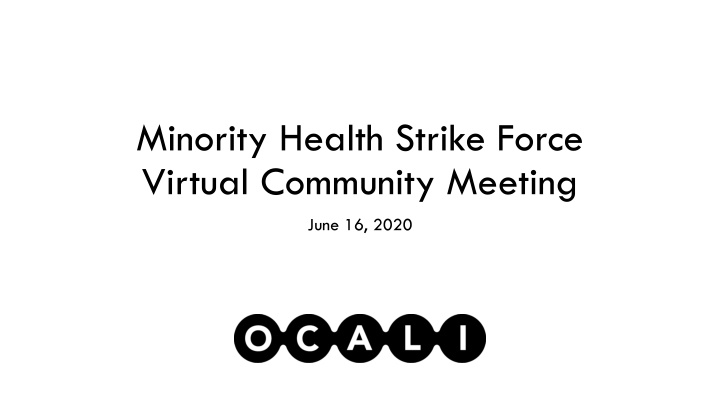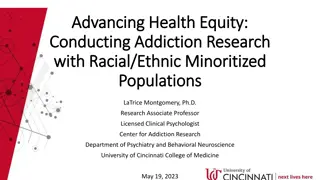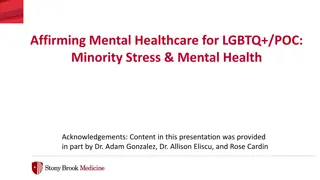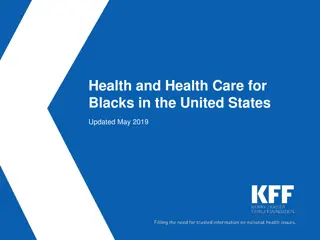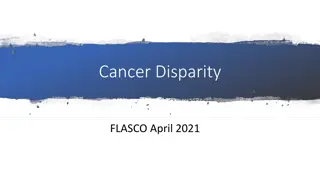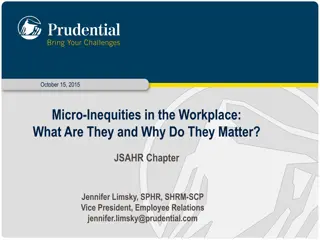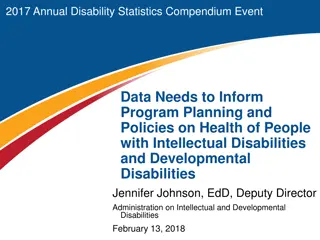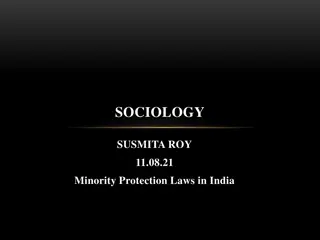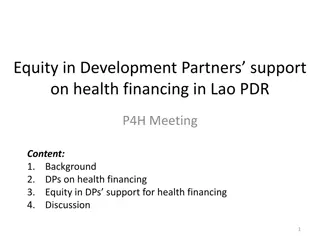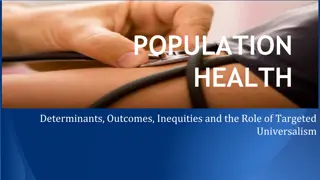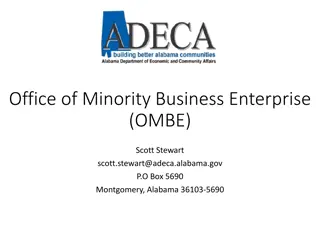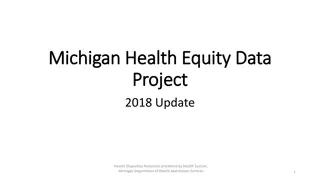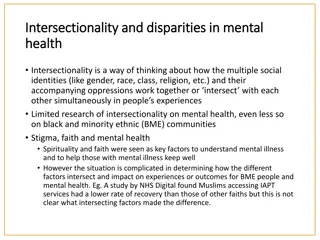Minority Health Disparities and Disabilities: Addressing Inequities in Care
Disabilities intersect with racial and ethnic minorities, leading to disproportionate health challenges. The COVID-19 pandemic has further exacerbated these disparities, especially among unpaid family caregivers. Recommendations include data disaggregation and inclusive efforts to address social determinants of health for minorities with disabilities.
Download Presentation

Please find below an Image/Link to download the presentation.
The content on the website is provided AS IS for your information and personal use only. It may not be sold, licensed, or shared on other websites without obtaining consent from the author.If you encounter any issues during the download, it is possible that the publisher has removed the file from their server.
You are allowed to download the files provided on this website for personal or commercial use, subject to the condition that they are used lawfully. All files are the property of their respective owners.
The content on the website is provided AS IS for your information and personal use only. It may not be sold, licensed, or shared on other websites without obtaining consent from the author.
E N D
Presentation Transcript
Minority Health Strike Force Virtual Community Meeting June 16, 2020
Disability Largest minority group in the U.S. Intersects with all historically disadvantaged and underrepresented racial and ethnic groups According to US Census (2010): 22.2% of African Americans 17.8% of Hispanics 17.6% of non-Hispanic whites 14.5% of Asians
Minorities with Disabilities By every measure, persons with disabilities disproportionately and inequitably experience morbidity and mortality associated with unmet health care needs in every sphere. Minorities with disabilities are doubly burdened by their minority status. US Department of Health & Human Services Advisory Committee on Minority Health
Disability, Race, Ethnicity, and COVID In New York, one factor strongly correlated with nursing homes most impacted by COVID: percentage of people of color who live there Not quality of care Not staffing levels Any story of COVID-19 and long-term care should include race and ethnicity alongside disability. That also applies to the long-term care workforce. Direct care workers who support people with disabilities to bathe, dress, and complete other basic activities of daily life have been undervalued for decades. The pandemic s devastating impact on nursing homes, group homes, and other long-term care settings has both highlighted these inequities and made them worse. National Health Law Program See also OCALI s Minority Health Strike Force Data & Research Town Hall presentation.
Minorities as Unpaid Family Caregivers Hispanic (non-White, non-African-American) and African-American caregivers experience higher burdens from caregiving and spend more time caregiving than their white or Asian-American peers. The percentage of high burden caregivers time by racial/ethnic groups: African-American: 57%, 30 hours per week Hispanic (non-White, non-African-American): 45%, 30 hours per week White: 33%, 20 hours per week Asian-American: 30%, 16 hours per week More than half of African-American caregivers are "sandwiched" between caring for an older person and a younger person (under age 18) or caring for more than one older person. African-American caregivers are more likely to reside with the care recipient and spend an average of 20.6 hours per week providing care. In addition, 66 percent of African-American caregivers are employed full or part-time.
Recommendations Follow best practices in data disaggregation related not only to COVID (i.e., testing, treatment, cases, hospitalizations, fatalities), but also the downstream effects of COVID and long-term recovery: Access to programs and services that promote social determinants of health (i.e., school lunch program, Head Start, etc.) Access to education Access to employment (unemployment, reemployment, and employment participation) Include minorities with disabilities in all efforts. Community leaders Community based-organizations Benchmark progress of most marginalized populations. Health outcomes Social outcomes
References Blick R.N., Franklin M.D., Ellsworth D.W., Havercamp S.M., Kornblau, B.L. (2015). The Double Burden: Health Disparities Among People of Color Living with Disabilities. Ohio Disability and Health Program Drum C, McClain MR, Horner-Johnson W, Taitano G. (2011) Health Disparities Chartbook on Racial and Ethnic Status in the United States Family Caregiver Alliance. (2019) Caregiver Statistics: Demographics. Machledt, David. (2020) Disability, Race, and Structural Inequity: COVID-19 and the Long-Term Care Workforce NPR Analysis of COVID 19 Deaths at New York Nursing Homes (2020) PHI Issue Brief: Racial and Gender Disparities Within the Direct Care Workforce: Five Key Findings (2017) PolicyLink. (2018) Counting a Diverse Nation: Disaggregating Data on Race and Ethnicity to Advance a Culture of Health Robert Wood Johnson Foundation. (2020). Health Equity Principles for State and Local Leaders in Responding to, Reopening, and Recovering from COVID-19 US Department of Health and Human Services Advisory Committee on Minority Health. Assuring Health Equity for Minority Persons with Disabilities: A Statement of Principles and Recommendations (2011)
